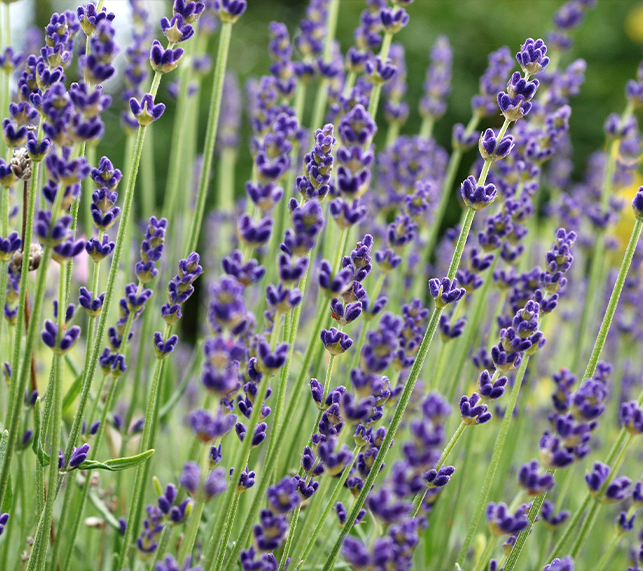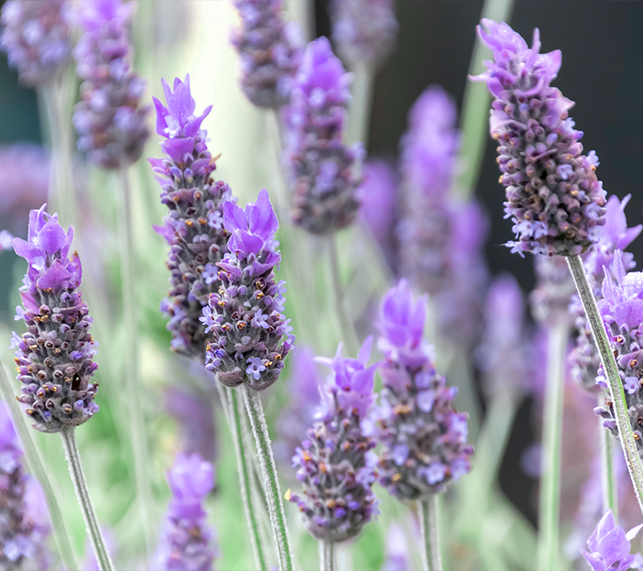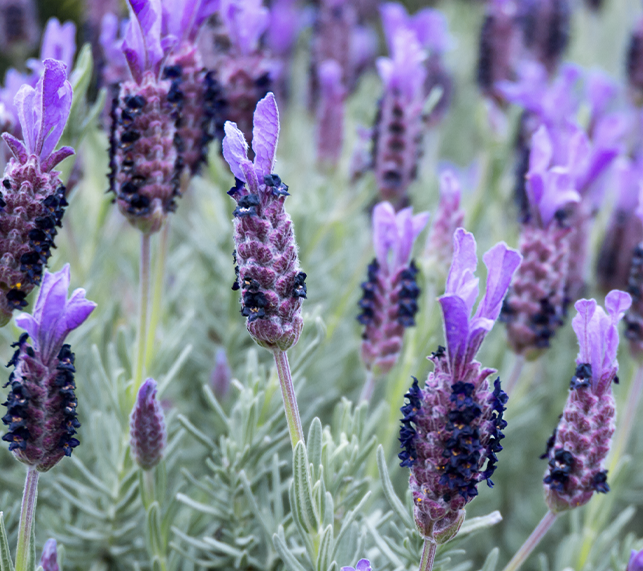
Learning Your Lavender

Living With Lavender
Imagine waking up in the morning, grabbing a cup of coffee, and stepping outside into your garden to smell the fresh aroma of lavender. Its silvery-green foliage and aromatic purple flower spikes are loved by pollinators and gardeners alike. Let's dig into all the different varieties of lavender and find some Mediterranean garden inspiration.
English Lavender
The most commonly planted variety. It's known for calming, fragrant flower spikes and narrow green leaves. English lavender is used for aromatherapy and in culinary creations.
French Lavender
This variety can be easily distinguished from others by its leaves, which have tooth-like edges and a light wooly texture. This variety gives a rosemary-like aroma and is less sweet than the English variety.
Varieties: French Lavender
Spanish Lavender
Distinct from other lavender by its unusual flower blossoms. It produces a dark purple pine-cone-shaped flower with a vibrant bract on top. This variety gives off a subtle piney fragrance.

Growing Lush Lavender
- Sun: Plant your lavender in full sun, it thrives in the heat.
- Water: During the first few years, lavender requires consistent moisture to establish a strong root system. Once established, water only when the soil is nearly dry.
- Soil: We recommend amending soil with organic matter—such as compost—if you have clay or sandy soil. Plant slightly above soil level to prevent crown rot.
- Fertilizing: When it comes to fertilizer, use it sparingly and use organic. Synthetic fertilizers can reduce the number of flowers by encouraging too much green growth.

Pruning Your Lavender
It’s important to prune your lavender, but when and how much you prune will depend on the variety of the lavender.
- English lavender should be trimmed to remove the spent flowers to encourage a second, and maybe even a third, bloom. Prune in late summer (August). When pruning, cut back to two-thirds of the current height without cutting into the woody part.
- English lavender hybrids should be pruned in late August after blooming is finished. Cut back about one-half of the plant height without cutting into the woody part, and then trim into a tidy mound.
- French, Spanish, and other non-English lavenders need to be trimmed after the first flowers fade. Do not prune back as heavily as recommended for English lavender. Deadhead for the remainder of the season, and shape into a mound in late summer.



